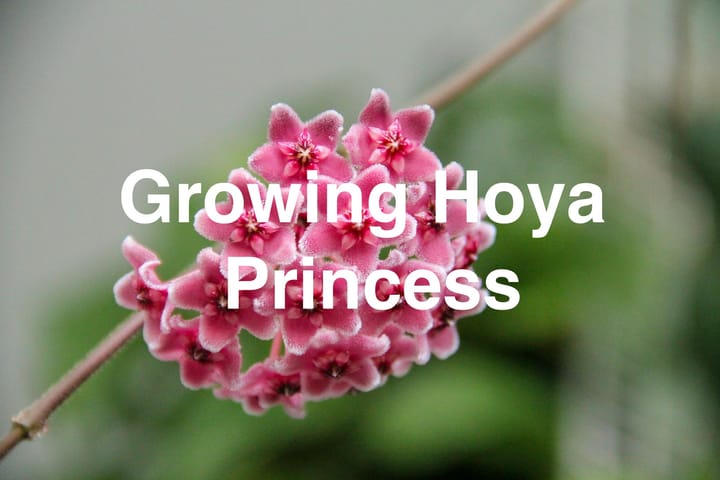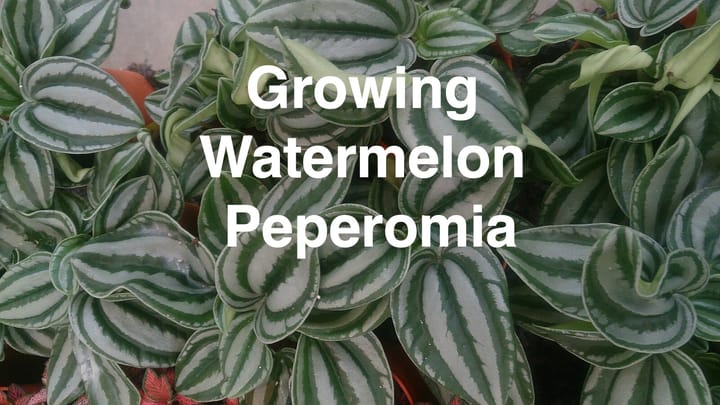How to Grow Peace Lilies
Peace Lilies, or Spathiphyllum, are a popular choice for indoor plants. They are known for their elegant white blooms and lush green foliage.
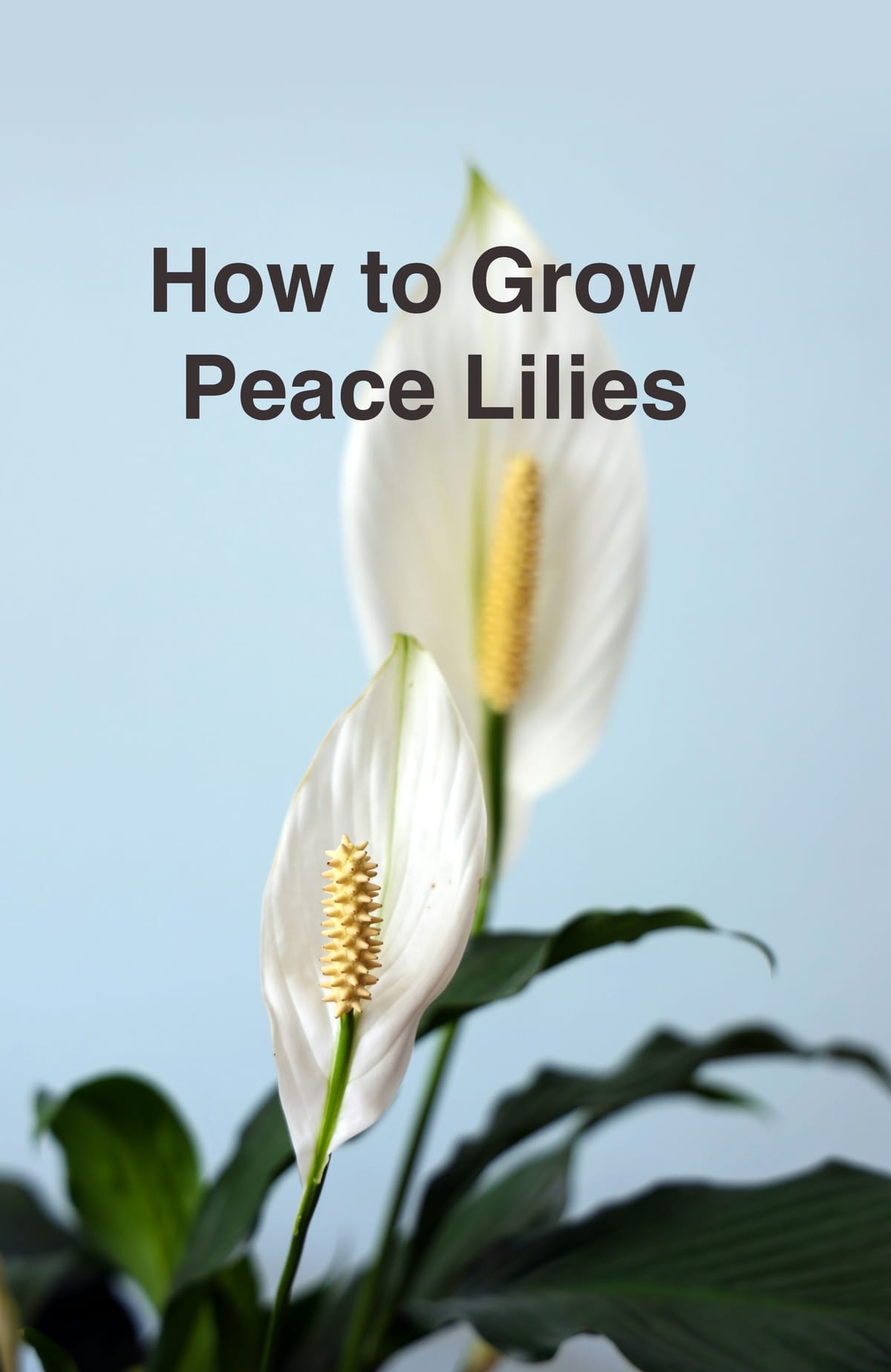
These tropical plants are relatively easy to care for, making them suitable for both novice and experienced gardeners.
While they can thrive in various conditions, understanding the basics of peace lily care will help ensure your plant stays healthy and blooms well.
These plants prefer indirect light and should be kept away from direct sunlight, which can scorch their leaves.
When it comes to watering, peace lilies are forgiving. They will droop to signal they're thirsty and quickly perk back up after receiving water. Being vigilant about the plant's environment and its specific needs will encourage regular flowering.
Regularly repotting your peace lily ensures it has ample space to grow. This process can even be used to propagate new plants.
Meanwhile, keeping an eye out for common pests and diseases will keep your peace lily in optimal health.
Key Takeaways
- Peace lilies offer decorative appeal and air-purifying qualities, and with proper care, they bloom beautifully indoors.
- Adapting to indirect light, these plants require consistent moisture without being overwatered and benefit from periodic repotting and propagation.
- Monitoring for pests and diseases is crucial for maintaining a healthy peace lily, contributing to vigorous growth and regular flowering.
Choosing the Right Varieties
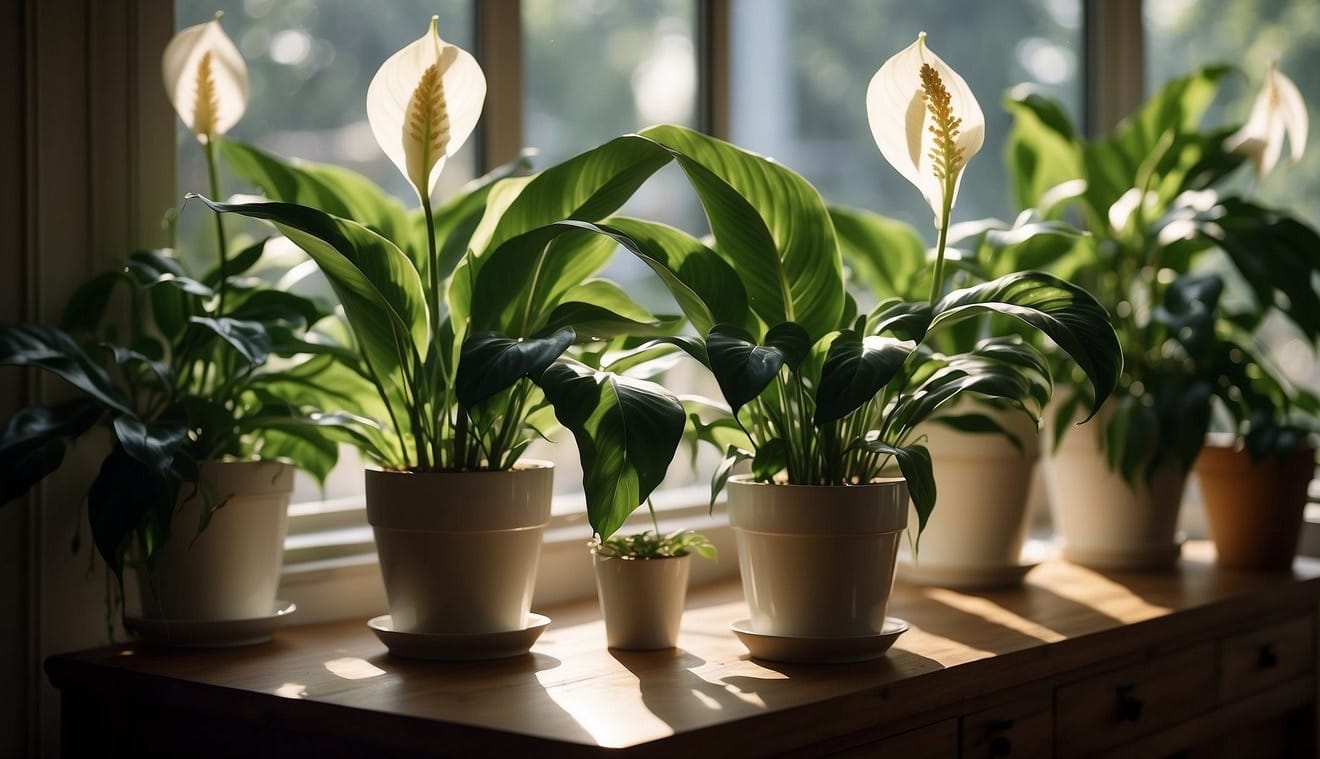
When selecting peace lilies for your home or office, it’s essential to understand the various species and sizes that are available to choose the perfect fit for your space.
Understanding Peace Lily Species
Peace lilies, Spathiphyllum spp., encompass a range of tropical evergreen plants renowned for their lush foliage and elegant white blooms.
They make an attractive addition to indoor environments and vary in size and appearance, which can influence your choice. Sensation is a sizeable variety with robust, dark green leaves, ideal for a statement indoor plant.
Selecting the Right Size and Variety
Your choice should be influenced by the size and setting of the area where you intend to place the peace lily. Consider these common varieties:
- Sensation: The largest Spathiphyllum variety, capable of reaching up to 6 feet in height and width.
- Power Petite: A smaller, more compact option suitable for desk tops or small spaces.
- Mauna Loa Supreme: A medium-large variety that balances size and ease of care, perfect for a floor container in living rooms.
- Mojo: Recognized for its glossy green leaves, this variety is vigorous and makes a bold statement.
Here's a quick reference:
| Variety | Size | Description |
|---|---|---|
| Sensation | Up to 6ft height | Large, with prominent leaves; less frequent blooms |
| Power Petite | Small | Compact, ideal for limited space |
| Mauna Loa Supreme | Medium to Large | Well-suited for rooms; decorative and easy to care |
| Mojo | Large | Glossy leaves, makes a strong visual impact |
Select a variety that you’ll be able to accommodate in terms of space, and that aligns with your aesthetic preferences.
Remember, no matter the size, each peace lily thrives in bright, indirect light and enjoys consistent moisture without being waterlogged.
Essential Care Guidelines
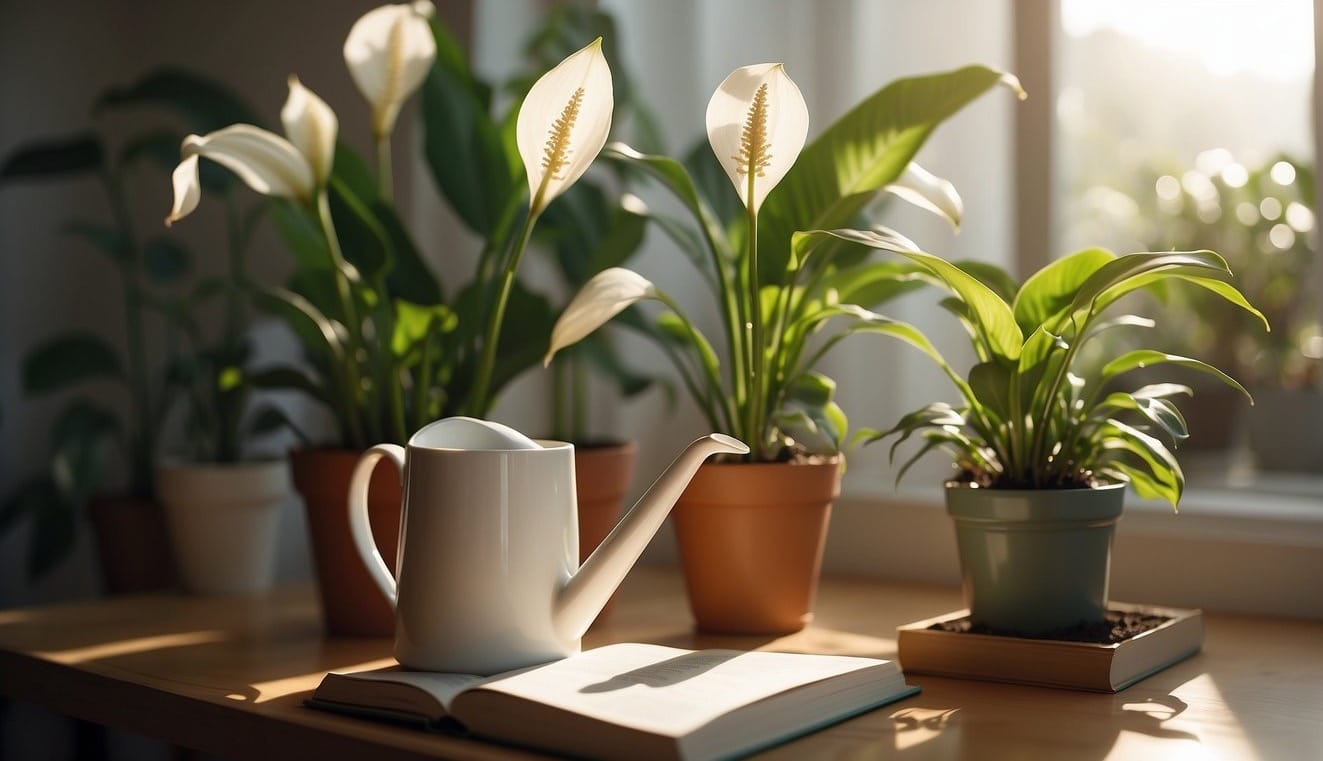
Peace lilies (Spathiphyllum) thrive when given the right balance of light, water, humidity, soil, and temperature. Your success with these plants hinges on replicating their native tropical conditions as closely as possible within your home.
Light Requirements
Peace lilies prefer bright, indirect light but can tolerate lower light conditions. Direct sunlight can scorch their leaves, so it’s best to place them in a location where they can receive filtered sunlight.
Watering Practices
Water your peace lily when the top inch of soil feels dry. Aim for consistently moist soil, but not waterlogged. Over-watering can lead to root rot, so ensure your pot has proper drainage holes to avoid standing water. Water roughly once a week, adjusting for your indoor environment.
Optimal Humidity Conditions
These tropical plants enjoy a humid environment. Regular misting or a humidifier can help maintain the humidity around 60%. Keeping them in a bathroom with a shower can also provide additional humidity, as long as there is sufficient light.
Soil and Fertilization
Use a well-draining, peat-based potting soil. Fertilize your peace lily every 6 to 8 weeks during the growing season with a balanced, water-soluble fertilizer, but avoid feeding in the winter when growth slows down.
Temperature Control
Peace lilies should be kept at temperatures between 65°F and 75°F (18°C to 23°C) during the day and slightly cooler at night. Protect them from drafts and abrupt temperature changes to prevent stress.
Planting and Repotting

Proper planting and timely repotting are crucial for the health and growth of Peace Lilies. This section will guide you on when to plant, how to do it correctly, and the fundamental steps for successful repotting.
When and How to Plant
When you first bring home a Peace Lily, you'll need to ensure it's planted in a suitable pot with adequate drainage. Your container should have drainage holes to prevent water accumulation and root rot.
Begin by placing a layer of compost or potting mix at the bottom of the pot. If you're concerned about soil leaking out, cover the holes with a coffee filter or fine mesh.
Gently place the plant in the center, then fill around it with a mixture of potting soil and perlite, allowing for better air circulation within the soil.
Repotting Fundamentals
Repot your Peace Lily when you notice roots are protruding from the pot's drainage holes or surfacing above the soil. Here’s a simple guide:
- Choose the new container—Select a pot that is 1-2 inches larger in diameter than the current one to provide sufficient room for growth.
- Prepare for the transfer—Before repotting, water the plant to minimize stress and ease the extraction process.
- Add potting mix to the new pot—Layer the bottom with fresh potting mix and position your Peace Lily so that it sits at the same depth as in its previous pot.
- Replant—Place your Peace Lily in the center, add more soil around the plant, and gently press down to eliminate air pockets.
- Water after repotting—Irrigate the plant to settle the soil and provide moisture for the roots. Make sure any excess water can drain out to avoid soggy conditions.
Maintenance and Pruning
Proper maintenance and pruning are vital to ensure your peace lily sports glossy green leaves and remains healthy. Regular cleaning and timely pruning support robust growth and prevent diseases.
Cleaning the Leaves
Peace lilies accumulate dust on their broad leaves, which can hinder their ability to photosynthesize. It's essential to:
- Gently wipe the leaves with a soft, damp cloth to remove dust.
- Spray with water using a spray bottle for a thorough clean, ensuring you don't oversaturate the soil.
Do not use any harsh chemicals that may damage the leaves.
Pruning and Deadheading
Pruning your peace lily helps remove dead or yellowing leaves and encourages the plant to focus energy on new growth.
- Cut back faded, damaged, or dead leaves at the base of the plant using clean, sharp pruning shears.
- Deadhead spent flowers by snipping the flower stalk near the base to promote further blooming.
Make sure you perform these tasks with care to avoid unnecessary harm to the plant.
Preventing and Managing Pests and Diseases
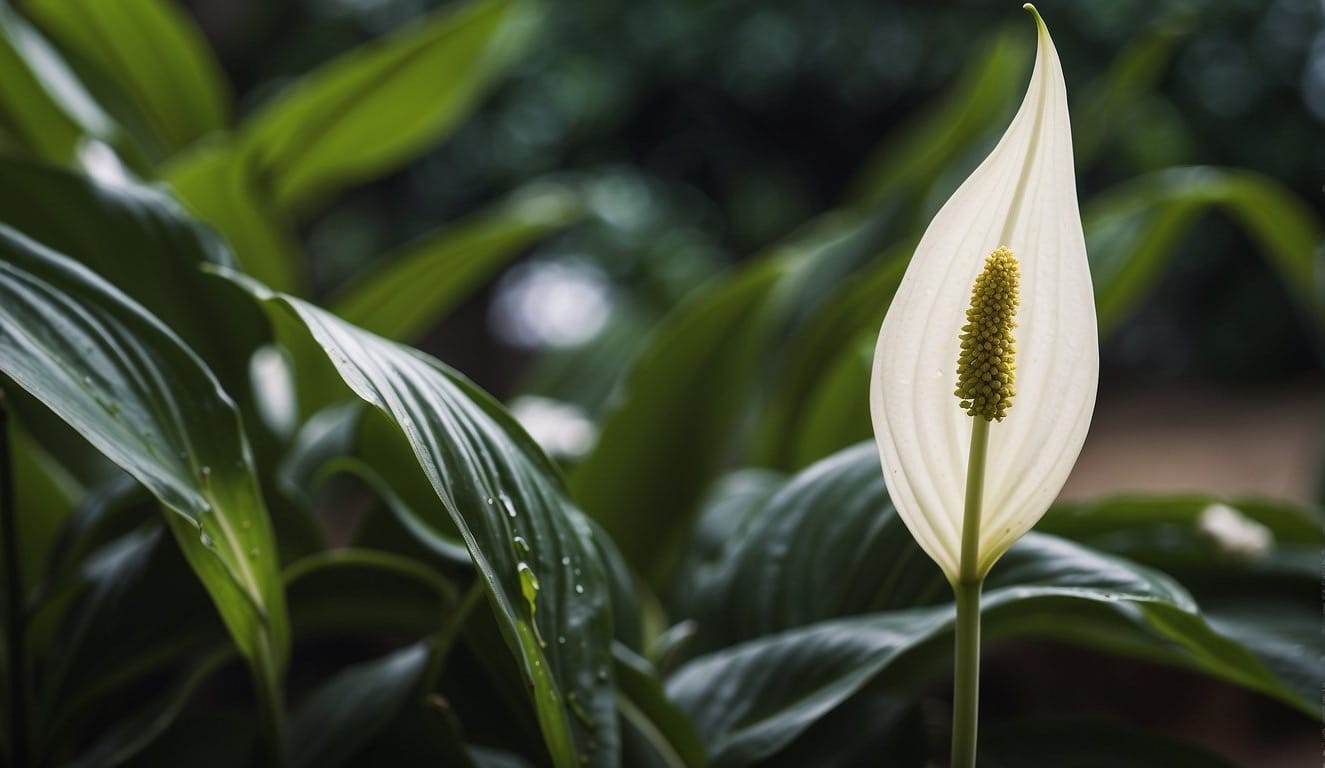
Peace Lilies can be susceptible to a variety of pests and diseases, but with proper knowledge, you can prevent and manage these issues effectively.
Identifying Common Pests
Common pests that may affect your Peace Lily include mealybugs, scale, and fungus gnats.
Mealybugs appear as small, cottony masses on the leaves and stems, whereas scale insects look like tiny brown or tan bumps on plant parts.
Fungus gnats are small, dark flies often seen around the soil and may indicate overwatering.
Recognizing Signs of Disease
Diseases like root rot can occur when overwatering leads to excessively moist soil. You'll notice wilting, yellowing leaves, and a foul smell emanating from the soil.
A fungus, on the other hand, may present as spots on leaves or a white powdery residue.
Treatment and Prevention
To prevent these issues, ensure your Peace Lily is not overwatered. Allow the soil to dry out slightly between watering sessions.
If pests such as mealybugs or scale are identified, wiping the leaves with a damp cloth or using insecticidal soap can be effective.
For treatment of root rot, remove the plant from its pot, clear the infected soil, and trim away any rotten roots before repotting in fresh soil.
Regularly inspect your plant for pests and diseases to intervene early, ensuring your Peace Lily remains healthy.
Encouraging Blooming
Peace Lilies are popular for their elegant white flowers, which are not true flowers but spathes, with a spadix inside.
To ensure your Peace Lily blooms, pay attention to its flowering cycles and provide the right care.
Understanding Flowering Cycles
Peace Lilies typically bloom in the spring with the potential to flower again in the fall if conditions are suitable.
The spathes, the white leaf-like parts, surround the spadix, which is the actual flowering structure.
After the initial bloom, these plants tend to follow a natural cycle of growth and rest. Proper care is essential to induce subsequent flowering.
Tips for More Blooms
- Light: Provide your Peace Lily with bright, indirect light. Too much direct sunlight can damage the leaves and hinder blooming.
- Water: Keep soil consistently moist but not waterlogged; overwatering can lead to root rot, which impairs flowering.
- Humidity: Maintain indoor humidity levels above 50% as dry conditions can prevent the spathes from developing.
- Fertilization: Use a balanced, water-soluble fertilizer every 6-8 weeks during the growing season to encourage blooms.
- Potting: Ensure the plant pot allows for proper drainage and consider repotting if the plant becomes root-bound.
By following these practices, you can help your Peace Lily produce beautiful spathes and enjoy its splendor year-round.
Understanding the Risks
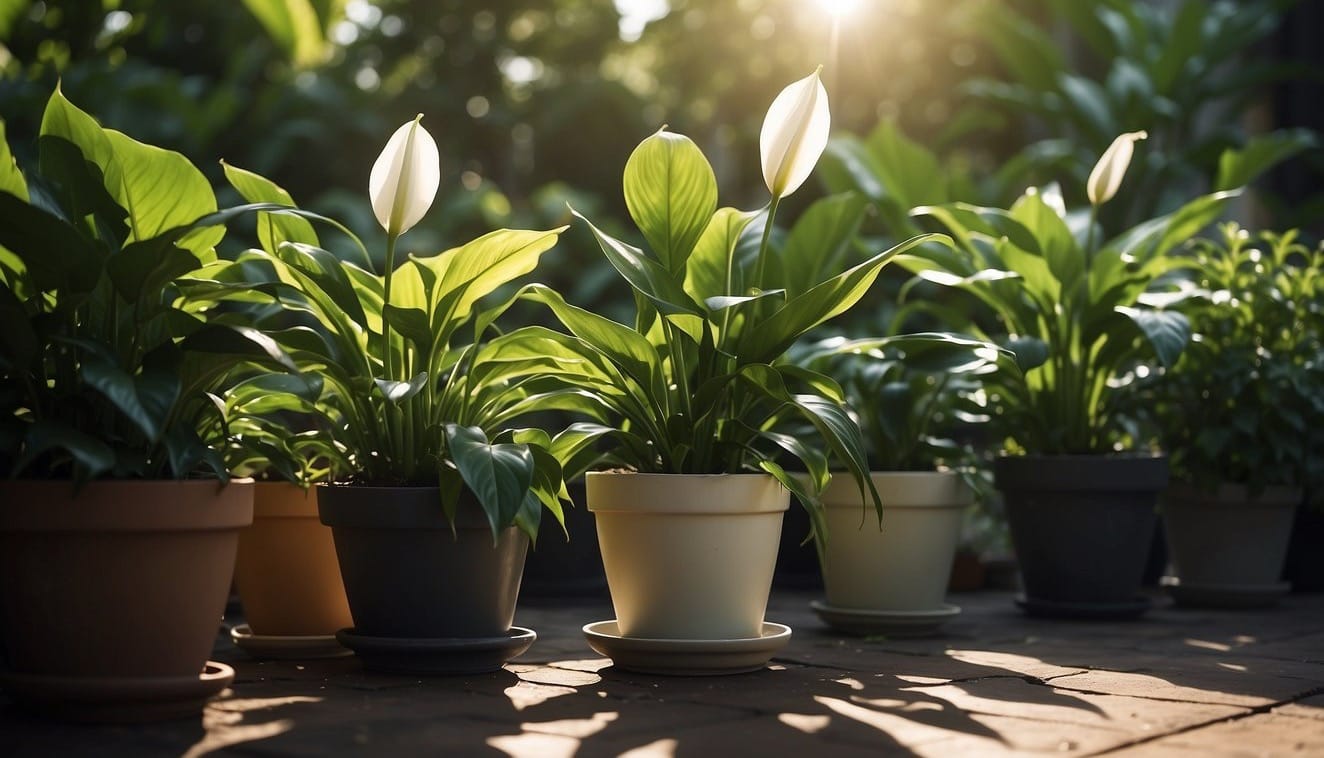
In growing Peace Lilies, you must be aware of certain risks, particularly the plant's toxicity to pets and humans, and the issues that can arise from incorrect watering practices.
Toxicity to Pets and Humans
Peace Lilies contain calcium oxalate crystals, which are toxic if ingested. If you have cats, dogs, or small children, be cautious as chewing or ingestion can lead to unpleasant symptoms.
- For Cats and Dogs:
- Symptoms: Oral irritation, vomiting, difficulty swallowing
- Precaution: Keep plants out of their reach
- For Humans:
- Symptoms: Burning sensation in the mouth, nausea, or skin irritation
- Precaution: Teach children to avoid touching or ingesting the plant
Managing Overwatering and Underwatering
Both overwatering and underwatering can pose risks to your Peace Lily's health, leading to a range of issues.
- Overwatering:
- Signs: Yellowing leaves, root rot, and a wilted appearance despite wet soil
- Prevention: Allow the top inch of soil to dry out before watering again
- Underwatering:
- Signs: Drooping, brown tips on leaves, and dry, compacted soil
- Correction: Water the plant thoroughly whenever the soil's top layer feels dry to the touch
Peace Lilies and Indoor Air Quality
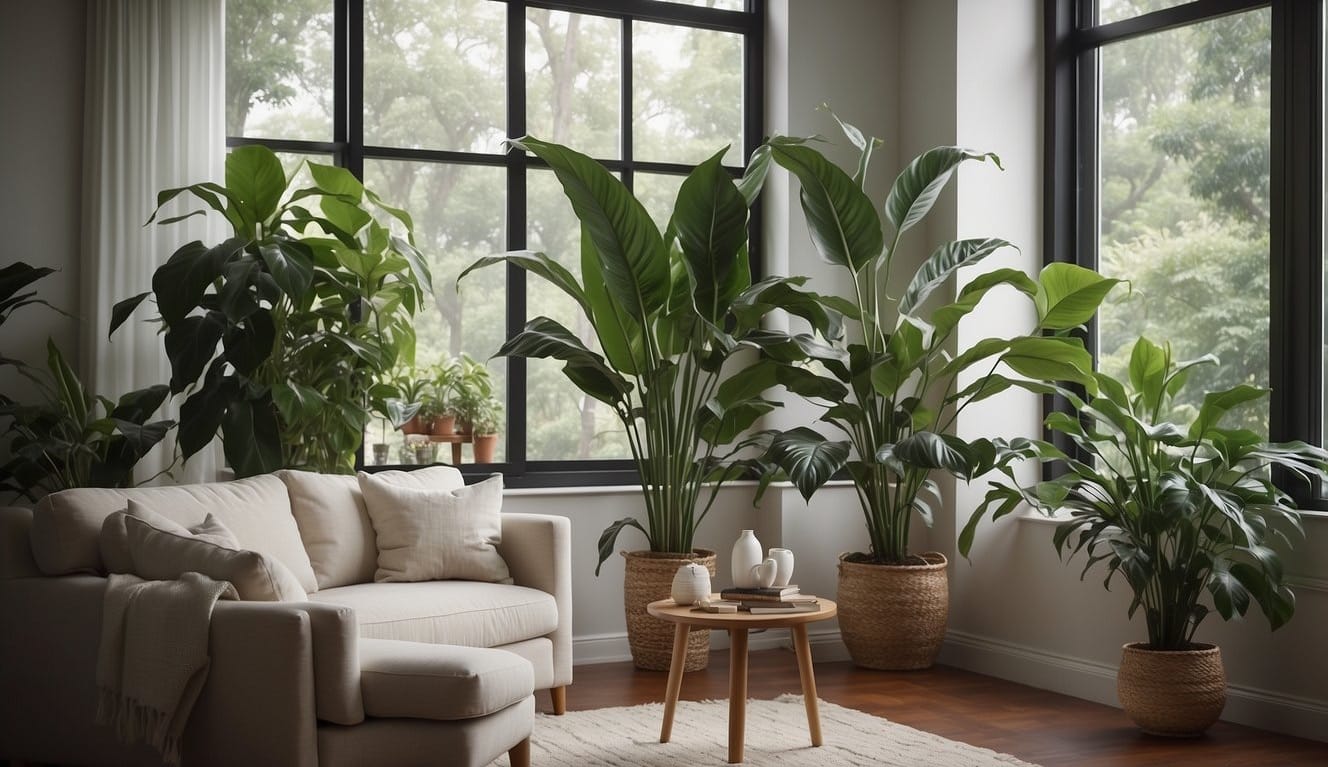
Peace lilies, part of the Araceae family, are tropical indoor plants that can enhance the air quality of your home or office. They are known for the ability to purify air, a trait that often makes them a preferred choice for indoor environments.
Indoor Conditions:
- Light: Peace lilies thrive in filtered sunlight, flourishing in low light conditions typical of many indoor settings.
- Air quality: They are claimed to clean the air, but it is essential to understand the limitations.
Air Purifying Capabilities:
Peace lilies can help purify the air, but the extent of this purification is often overstated. They are capable of filtering certain toxins from the air. However, the degree of air purity achieved by a single plant in a typical indoor space may be modest.
Toxins reduced: These plants have been studied for their ability to mitigate airborne substances like:
| Substances Peace Lilies Reduce |
|---|
| Ammonia |
| Benzene |
| Formaldehyde |
| Trichloroethylene |
Remember, the volume of air that a peace lily can effectively clean is quite limited compared to the vast amount of air in an average room.
Moreover, NASA's studies suggest their purifying effects were conducted in controlled, sealed environments, which do not accurately reflect typical home or office conditions.
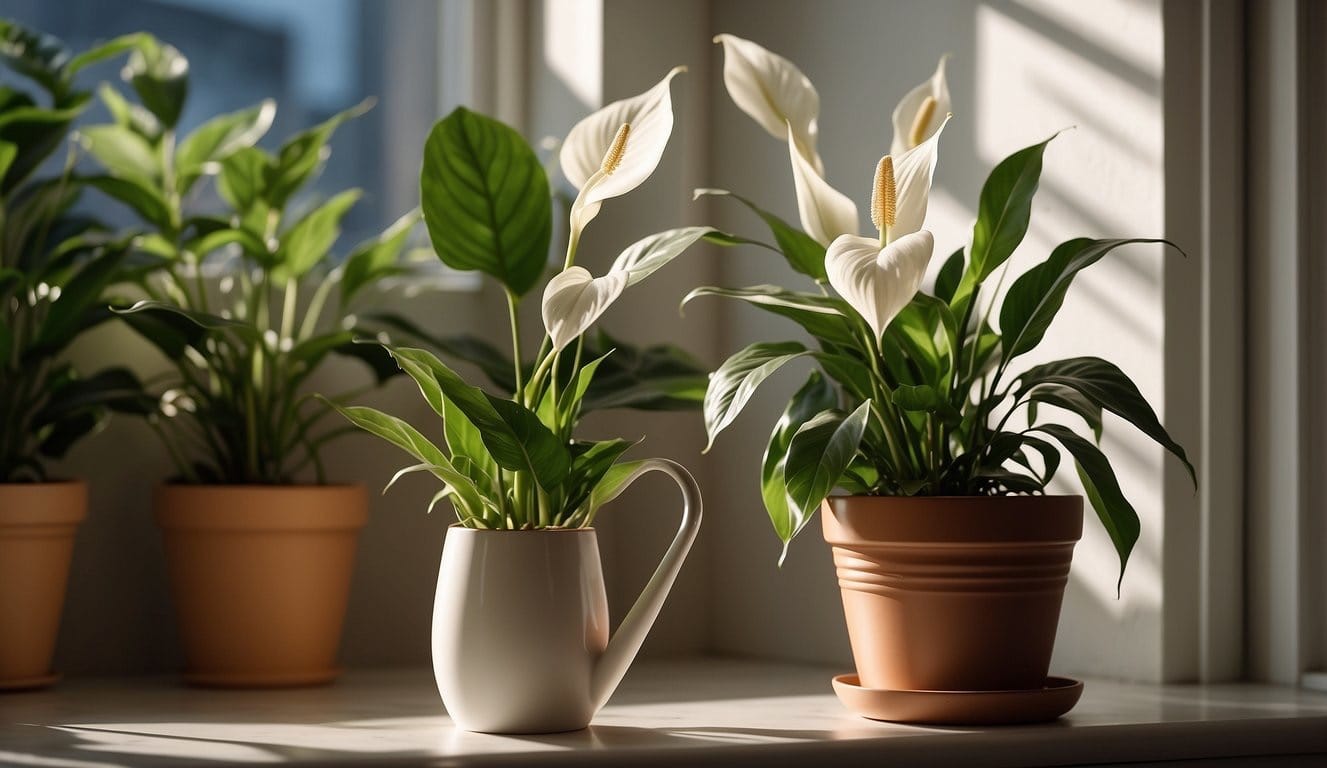
When incorporating peace lilies into your decor for air purification, consider them a supplemental measure rather than a primary solution.
To sustain their purifying effect, ensure proper care by keeping the soil moist (but not soggy), providing low to moderate light, and maintaining a regular cleaning schedule to remove dust from the leaves, thus enabling the plant to perform optimally.
Frequently Asked Questions
In this section, you'll find targeted advice on cultivating peace lilies. Each query addresses a specific aspect of peace lily care, helping you to provide the best environment for your plant.
What steps are needed to successfully grow peace lilies in pots?
To grow peace lilies in pots, select a container slightly larger than the plant's root ball. Use well-draining potting mix, and ensure the root crown is just above the soil surface after planting. Regular watering to keep the soil moist and placing the pot in indirect light will promote healthy growth.
How can I encourage my peace lily to bloom?
Ample, indirect sunlight and consistent moisture help peace lilies bloom. Support flowering by maintaining a balanced room temperature and consider using a balanced fertilizer in spring and summer. Blooming typically occurs when the plant experiences a slight difference between day and night temperatures.
What is the ideal location indoors for a peace lily plant?
Your peace lily prefers a spot with bright, indirect sunlight away from direct sun exposure, which can scorch its leaves. Ideal indoor locations include near a north-facing window or a few feet away from a west or east-facing window, providing a warm, consistent temperature.
What are the essential care tips for peace lilies outdoors?
When growing peace lilies outside, offer them a shaded location to avoid direct sunlight. Protect them from harsh elements and ensure the outdoor soil drains well, preventing waterlogged roots. They thrive best in areas with warm temperatures, high humidity, and protection from strong winds.
How should I treat a peace lily that appears to be dying?
First, diagnose the issue: overwatering, underwatering, or pest infestation can cause wilting or browning. Adjust your watering routine as needed, ensure proper drainage, and remove any damaged foliage. If pests are present, treat them with appropriate measures such as insecticidal soap.
What are the best practices for peace lily maintenance for beginners?
For beginners, keep the soil consistently moist without overwatering.
Place your peace lily in bright, indirect sunlight. Maintain room temperature between 65°F and 80°F.
Fertilize lightly every 6-8 weeks during the growing season. Also, wipe the leaves with a damp cloth to remove dust.
